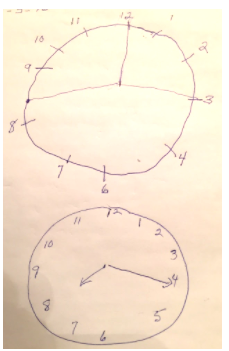The average older adult takes four prescription drugs daily.1 As the number of medications increase, so do the odds of untoward side effects.2 A friend’s escalating problems over several months coincided with increased use of prescription and over-the-counter medications. She did not know that self-medicating with diet pills could affect her memory and ability to think. How do you know if someone has signs of side effects from medications?
Aging makes us more sensitive to drugs; even the brain itself becomes more sensitive to medications.3 And, as we get older and need medications to manage our disease, we acquire prescriptions and risk untoward effects from them. Clearly, this can produce a real potential danger for side effects of special concern for older adults. Research also shows that when a person uses multiple medications, i.e., polypharmacy, some experience reactions that mimic symptoms from diseases common in older adults.4 Therefore, physicians often find attributing a new symptom to medication or a disease challenging, often referred to by geriatricians as the “prescribing cascade.” Examples of such adverse reactions include: confusion, anxiety, depression, fatigue, less alert, falls, gastrointestinal symptoms, or even an aversion to food.5 An outsiders’ observation can provide the critical information that brings such symptoms to their or their doctor’s attention.
In addition to atypical and odd behaviors, my friend sustained minor falls, became forgetful, left credit cards at the store checkout counter, took daytime medications at night, and forgot the way home from a familiar store. As family members’ concern grew, a physician friend asked that she draw, “the face of a clock with the hands showing the time of 8:20.” A clock drawing test is utilized to evaluate people for signs of possible neurological dysfunction and is used to screen for dementias like Alzheimer’s Disease.6 My friend (top image) and her 93-year-old mother (bottom image) drew these clocks at the same time (Figure 1). Unable to perform this task, combined with the other observed behaviors, prompted the family to immediately schedule an appointment with her primary care physician.

Figure 1. Analog clock image showing “8:20” drawn by friend while on medications/self-medicating (top frame) in comparison to clock drawn by her 93-year-old mother (bottom frame).
In my friend’s case, the clock drawing test together with the behaviors alerted her physician to do a complete review of her medications. After his evaluation, her doctor proceeded to deprescribe medications. Deprescribing means to stop or decrease medications that are no longer helpful or could be causing harm to an individual.3 This process requires time and vigilance. According to Drs. Barbara Farrell and Dee Mangin, in a 2019 editorial, there are five steps to deprescribing: 1) determine the potential problematic medication(s); 2) adjudicate if medication(s) can be discontinued or dosage(s) diminished; 3) create a plan to gradually reduce medication(s); 4) support and observe the patient; and 5) record the results.7
In addition to deprescribing the prescription drugs, my friend’s doctor emphatically told her to stop taking the green tea extract and garcinia cambogia diet pills. My friend thought, as many people think, if you can buy such diet pills at the drug store without a prescription that they are safe to take. Within days of enacting the changes, her mental acuity improved, she became more like her old self, and her clock drawing improved to where it displayed the correct time. This entire process educated me. It became more evident that medications caused these apparently circumstantial events, i.e., side effects!
Aging and disease change us and there are medications that may be necessary for a person to take to stay healthy. This story reminds us of the importance of sharing prescription and non-prescription medications taken with one’s health care provider. In addition, to be mindful that acquired symptoms can be side effects resulting from medications.

